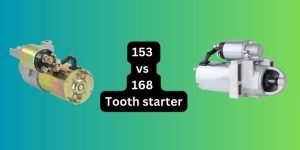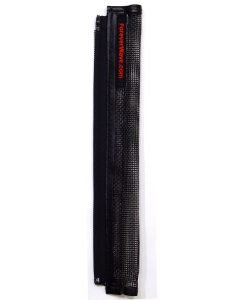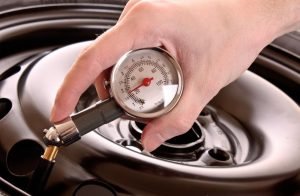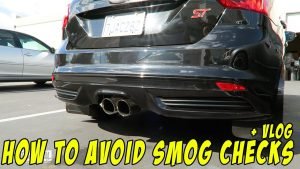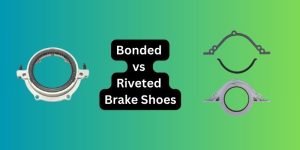
Contents
Restore Your Headlights to Like-New Condition with Baking Soda: A Simple DIY Guide
Are your headlights cloudy, yellowed, or scratched? Don’t despair! You can often restore their clarity and brightness significantly using a simple, affordable method: baking soda. This DIY approach is a fantastic alternative to expensive professional headlight restoration, saving you money while giving you a satisfying sense of accomplishment. This guide will walk you through the process step-by-step, ensuring you achieve the best possible results.
🛒 Recommended Product
Why Baking Soda Works:
Baking soda, or sodium bicarbonate, is a mild abrasive. This means it’s gentle enough to remove surface-level scratches and oxidation that dull your headlights without causing significant damage to the plastic lens. Its mildly alkaline nature also helps neutralize some of the acidic contaminants that contribute to headlight clouding.
What You’ll Need:
- Baking soda: A standard box from your grocery store will suffice.
- Water: Use clean, lukewarm water.
- Soft cloths or microfiber towels: Avoid abrasive cloths that could scratch the lens further.
- Bucket or bowl: To mix your paste.
- Optional: Masking tape: To protect surrounding areas from accidental abrasion.
- Optional: Spray bottle: For easier application of water.
Step-by-Step Instructions:
-
Prepare the Headlights: Thoroughly clean your headlights with soap and water to remove dirt, grime, and loose debris. Dry them completely before proceeding. If you have sensitive paint near the headlights, apply masking tape to protect it.
-
Make the Baking Soda Paste: In your bucket or bowl, mix baking soda and water to create a thick paste. The consistency should be similar to toothpaste. You may need to experiment to find the right ratio – start with a small amount of water and add more as needed.
-
Apply the Paste: Using a soft cloth, apply the paste to the clouded areas of your headlights in a circular motion. Don’t press too hard; gentle pressure is all you need. Work in small sections at a time.
-
Scrub Gently: Continue scrubbing with the baking soda paste for 5-10 minutes per section. You should start to see the headlight becoming clearer as you work. Add more paste as needed, ensuring it remains relatively thick.
-
Rinse and Repeat: Once you’ve scrubbed the entire headlight, rinse thoroughly with clean water. Assess the results. If necessary, repeat steps 3 and 4 for areas that require further attention. Avoid excessive scrubbing, as this could damage the headlight lens.
-
Dry and Buff: Dry the headlights completely with a clean, dry microfiber cloth. For an extra shine, you can gently buff the lenses with a clean, dry cloth using circular motions.
Tips for Success:
- Work in a shaded area: Direct sunlight can cause the baking soda paste to dry too quickly.
- Be patient: This process may require some time and effort to achieve optimal results.
- Don’t be overly aggressive: Gentle scrubbing is key to avoid scratching the headlight lens.
- Clean your tools frequently: A clean cloth will ensure you’re not spreading grit across the headlight surface.
- For stubborn stains, repeat the process: You may need multiple applications for heavily clouded headlights.
Common Mistakes to Avoid:
- Using abrasive materials: Avoid harsh scrubbing pads or abrasive cleaners, as these can scratch the plastic lens.
- Applying too much water: A thick paste is crucial for effective cleaning. Too much water will dilute the paste, rendering it ineffective.
- Skipping the cleaning step: Remove all dirt and debris before applying the baking soda paste to ensure a smooth finish.
- Ignoring the drying process: Thoroughly dry the headlights to prevent water spots and ensure the best results.
By following these simple steps and avoiding common pitfalls, you can successfully restore your headlights’ clarity using baking soda. Remember that this method is best suited for surface-level imperfections. For severely damaged headlights, professional restoration might be necessary. Enjoy your newly brightened and safer driving experience!
🛒 Recommended Product
FAQ
Q. What materials do I need to restore my headlights with baking soda?
A. You’ll need baking soda, water, a bowl, a sponge or soft cloth, a toothbrush (old one is best), and optionally, some white vinegar and automotive-grade clear coat sealant.
Q. How do I make the baking soda paste?
A. Create a paste by gradually adding water to the baking soda until you achieve a consistency similar to toothpaste. It shouldn’t be runny, but smooth enough to apply easily.
Q. How do I apply the baking soda paste to my headlights?
A. Apply the paste to your headlights using a sponge or cloth. You can then gently scrub the headlight lenses with the toothbrush in a circular motion, focusing on heavily oxidized or cloudy areas. Avoid applying excessive pressure to prevent scratching the plastic.
Q. How long should I let the baking soda paste sit on my headlights?
A. Let the paste sit for about 10-15 minutes, allowing it to work on the oxidation. You might need to reapply the paste during this time if it begins to dry out.
Q. Do I need to use vinegar, and what are the benefits of using a clear coat sealant?
A. Vinegar is optional. Some people add a small amount of white vinegar to the paste for a slightly more abrasive cleaning action. However, it’s not strictly necessary. After cleaning, a high-quality automotive-grade clear coat sealant is highly recommended to protect your restored headlights from future oxidation and UV damage, extending their clarity.
Q. What if my headlights are severely yellowed and the baking soda method doesn’t completely remove the cloudiness?
A. For severely damaged headlights, the baking soda method might not be sufficient. In such cases, consider using a more intensive headlight restoration kit that employs wet sanding and polishing compounds for deeper cleaning and restoration. These kits can be more effective for heavily oxidized lenses, but require more careful technique to avoid damaging the headlight.
Q. How often should I repeat the baking soda headlight restoration process?
A. The frequency depends on your driving environment and weather conditions. However, it’s generally recommended to repeat the process once or twice a year, or as needed, to maintain headlight clarity. Regular washing of your car will also help to prolong the results.
Related Articles
How to Fix a Car Air Conditioning System
How to Fix Your Car’s Air Conditioning System: A Step-by-Step Guide Is your car’s AC blowing hot air on a sweltering summer day? Don’…
How to Clean a Car Engine Bay
How to Clean Your Car Engine Bay: A Step-by-Step Guide A clean engine bay not only looks great but can also help detect potential problems early on. L…
How to Check Brake Pads in Your Car
How to Check Your Brake Pads: A Step-by-Step Guide Keeping your brakes in top condition is crucial for safety. Knowing how to check your brake pads yo…
Affiliate Disclosure: As an Amazon Associate, I earn from qualifying purchases made through links on this site.


